By: Morgan Pressley
I gazed into the partly steamed mirror as a ran my fingers through the three inch high cold black forest of curls, coils, kinks and fuzz. I used all the strength in my 10 year old hands to pull and flatten my forest down like I could do just fifteen minutes earlier. I pulled in one direction. Fail. I pulled in another direction. I spread my fingers further apart to grab more hair. I bowed my head forward and tried to contain all the hair from the back and pull it on top of my head.
I strategically sectioned my hair. Curls broke loose, Kinks refused to cooperate, Coils sprung out, and fuzz brought a rough untamed appearance. I yelled at her, yanked, screamed, and pulled with aggression and frustration. My eyes began to water, and tears slowly dropped from my cheeks like the water dripping from my hair. What had I done?
At the tender age of 10 I unconsciously struggled with the societal conceptual standard of normality in external appearance. Even at the age of 25 I continue to discover other societal hypocrisy and the communication of self-hate. A new sociological concept has been swarming recent media and social issues lately and had brought me to a revelation. Cultural Appropriation.
Cultural appropriation has two very important definitions. First; a privileged group misrepresenting and disrespecting marginalized cultures intellectual property, traditions, artifacts, symbols, fashion etc,in which the originators rarely get credit, but always deal with the consequences. Second; a group in which the culture, appearance, beliefs and traditions are mocked and belittled by the dominant group in order to spread inferiority ideals.
It is obvious that people of color in the “Melting Pot”, (more like Salad Bowl) of America have faced both sides of cultural appropriation since setting foot in the “Land of the Free”. In recent years I have come to realize just how much of a psychological effect this has had on Black women specifically.
Physically, black women have ALWAYS been globally unique. We come in various shapes, sizes, and shades. We stand out in most crowds, and individually stand out in crowds of us. This distinct individuality yet unicity is something we should delight in daily. Unfortunately it has been skewed by a hybrid of cultural appropriation and assimilation.
The destruction of our beauty and the creation of self-hate began with the second definition of appropriation. Society began to shape beauty around the image of the white woman. Straight hair, fair skin, thin lips, and lack of curves. Encompassing all of these features in one black woman is nearly impossible.
The effect of this was, the further divide between shades of Black women (Light vs. Dark, though this originated in times of slavery), bleaching cream, and chemical relaxers. Prior to, Ethnological Expositions (Human Zoos) were established across Europe to lust, exploit and degrade the fanatical physical appearance of the bare Black woman. How can a woman find beauty in herself when it has been lusted and told it was not beautiful? By assimilating to be merely accepted by society.
After years of pursuing, perfecting and attaining societal acceptance, the second definition of cultural appropriation shows its face. Now, beauty is full lips, curves (booty), dark skin, and “wild” hair. This new beauty is only beautiful on the imitator, and not the originator. The originator is frowned upon by the imitator and their fellow originators as well. For example, Kylie Jenner and her “Dred Locks” are considered edgy and is praised. Meanwhile, I am told I cannot wear any form of braids if I wanted to work at my minimum wage job as a 16 year old, because it does not “fit the brand”.
Growing up in the black community, dred locks were also seen as risky to get if “You want to get a job and be taken seriously”. A sad learned concept stemmed by cultural appropriation. Another example would be the booty, hip, and thigh injection phenomenon. Many non-black women are now having procedures to achieve a bigger butt, and to receive praise and attention for it, from men of all races (including our men).
Black women with large butts were looked upon as aliens and inhumane in the past (Human Zoos) and are not given any recognition in the present. Teen Vogue featured a White model to enlightened teens about Senegalese twist, in which she wore in her hair.
Marc Jacobs stuned the fashion world with his runway show where models wore “Mini Buns” on their heads; originally known as Bantu Knots. Elle Magazine UK stated that Katy Perry created a new trend we all know as “Baby Hair”. Twerking is now acceptable and no longer an aggressive abrasive mating slut dance since Mylie Cyrus began to swear by the dance.
Black women are shamed by everyone (even our own men and women) for wearing weave/extensions, as if Jessica Simpson does not have her own line of extensions. Allure magazine releases a tutorial article in which features a white woman with an afro teaching white women how to obtain afros. We all know Rachel Dolezal is the epitome of Cultural Appropriation.
Black women have experienced centuries of cultural appropriation of both definitions, which has only blinded us of our beauty, divided us as a unit, and has given us a sense of hopelessness of achieving our own logic of beauty and owning it.
In recent years Black women have begun to counteract the damage done by the society’s impossible expectations and disrespectful use of cultural appropriation. How have we done so? Black women across the globe who have experienced the Westernized oppression of Black beauty have decided to take back our most distinct feature, (next to our flawless skin) and that is with our hair.
The natural hair movement opened the eyes of self-discovery in Black women. It has opened up the doors to learning to appreciate and take care of our hair. All generations have embraced this movement and are shamelessly wearing the God given hair that grows from our hair in an array of styles, and are inventing more by the day. Women who wear weaves/extensions have now began to wear variations of hair, such as Natural hair weaves that come in many curl patterns, thickness and types.
Corn Rows are not just the only type of braids we rock. We rock box braids, crochet braids, French braids. We twist in many ways as well. We flat twist, we Senegalese twist, we Marley Twist, we wear Havana Twist. There are different types of Locs like Free Form Locs, Traditional Locs, Sister Locs, Brade Locs.
Our hair, whether natural, relaxed, or hidden under weave/extensions; straightens, curls, waves, stretches, shrinks, ties, twists, reacts to the weather, and can look natural and beautiful on any shade of Black across the globe. That reality, versatility, and individuality has created unity in us as race and gender that can never be duplicated by anyone other than us. That truth we are embracing has helped us overcome our past of self-hatred, insecurities and ill perception of self. It has helped us establish our own spectrum of beauty where ALL is uniquely and specifically accepted.
Those tears of pain and frustration I cried as a 10 year old who just did a Big Chop, have turned into tears of joy. Joy in the revelation of the beauty I innately have as a Black woman through the knowledge of our hair. Joy in the growth I have seen Black women have in acceptance of our hair in all of its fabulous states and joy in the destruction of our past oppressive conceptions of beauty. Not only tears of joy, but also tears of laughter.
Laughter at anyone who dares to culturally appropriate what is God given and considers their duplication as truth. They say “Imitation is the sincerest form of flattery”, the world has been and will always be flattered at our hair, but imitation is impossible with the inimitable follicle.



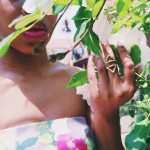

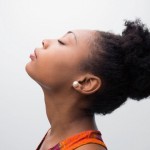


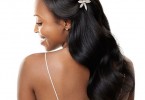
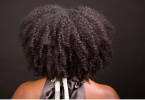

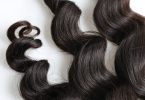

Overall, i agree with this article. But, please don’t compare Jessica Simpsons’ weave/extension line, that more than likely resembles her real hair, to black women wearing straight, and/or loosely curled weave. Weave and extensions are meant to enhance what you NATURALLY have, which is where the problem with black women wearing weave comes from. Most of the weaves black women wear look nothing like our real hair, and we used to say our hair was “done” whenever we had some form of fake hair in our hair,besides braids, that didn’t look like our hair. Now we call it “protective styling”.… Read more »
My black matter bogs are open for the rare opened and expanded for the happiness of the strangers with the whole of the program of the proper nations. The posture is followed for the fulcrum essay writing service of the bits in the implied items for the citizens.